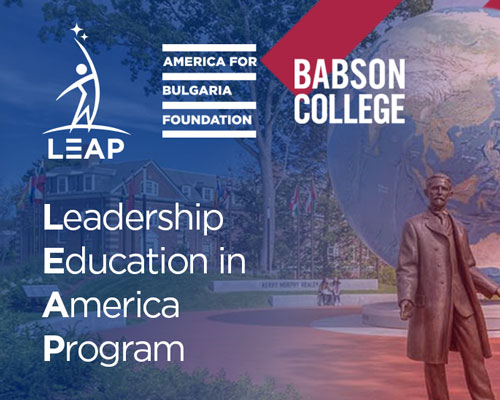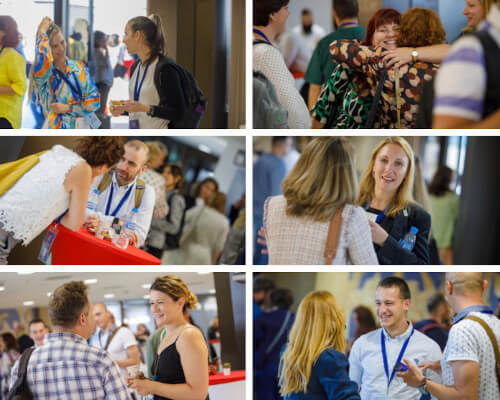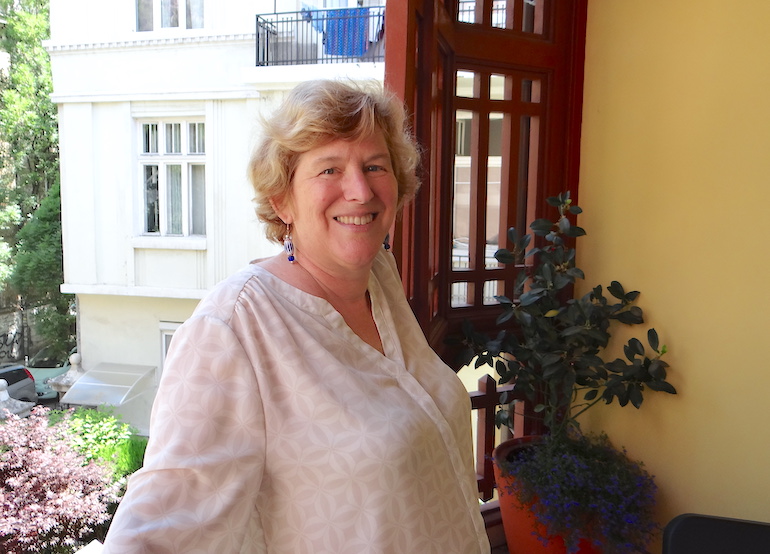 Nicole Simmons isn’t a diplomat, yet she has become one of the most recognizable faces on the diplomatic circuit in Bulgaria in recent years. The wife of outgoing US ambassador Eric Rubin, she has been a fixture at public events across the country during his term. What made Nicole stand out, though, was her work to facilitate cultural exchange between Bulgaria and the United States and to promote charitable giving in Bulgaria. Add to that her optimism, approachability, refreshing openness, and ability to connect with others, and you get cultural diplomacy at its very best.
Nicole Simmons isn’t a diplomat, yet she has become one of the most recognizable faces on the diplomatic circuit in Bulgaria in recent years. The wife of outgoing US ambassador Eric Rubin, she has been a fixture at public events across the country during his term. What made Nicole stand out, though, was her work to facilitate cultural exchange between Bulgaria and the United States and to promote charitable giving in Bulgaria. Add to that her optimism, approachability, refreshing openness, and ability to connect with others, and you get cultural diplomacy at its very best.
Nicole brought a new energy to diplomatic circles and a whole new meaning to the term “diplomatic spouse.” An epidemiologist and public health expert with a background in journalism (she met her husband while they were both working at the copy desk of The New York Times!), she approached her work in Bulgaria with the thoroughness of the scholar, the strong ethics of the journalist, and the cool-headedness of the public health official. Her energy materialized into a series of art exhibitions and one of the most successful editions of the International Women’s Club’s annual charity bazaar, the largest fundraising event in the country. During the ambassador’s term in Bulgaria, Nicole also worked on two international health projects, in Swaziland and in Bangladesh, for Johns Hopkins Bloomberg School of Public Health.
In Bulgaria, Nicole oversaw the organization of the twenty-fourth charity bazaar of the International Women’s Club, on December 2, 2018. The massive effort involved coordinating the work of 1,500 volunteers from 60 countries, attracting sponsors, creating an entertainment program, and printing posters and other publicity materials, among others. At least 10,000 people attended the bazaar, helping to raise 400,000 Bulgarian levs for Bulgarian nonprofits.
Nicole also became involved in the State Department’s Art in Embassies program, which showcases the work of living US and foreign artists by way of creating cross-cultural dialogue. For the US-Bulgaria exchange, she selected works with “lots of light and color and sparkle” by US and Bulgarian artists. She titled the series of exhibitions she organized in Bulgaria “Expressive Landscapes” as she felt it best represented the two countries.
The series introduced the work of US artists H. K. Anne, Bascove, Noël Hudson, Michiko Itanani, Cindy Litchfield, and Alex Katz to Bulgarian audiences. It also featured several temporary exhibitions, displaying works of photography, painting, and glass art by well-known and up-and-coming Bulgarian artists, among them Hari Atanasov, Krasi Todorov, Selma Todorova, Marin Delimarinov, Petya Deneva, Alexander Ivanov, and Monika Naydenova.
For Nicole, art is a hobby, but she approaches it the way she would a health study: she’d examine the subject meticulously, compare options, and identify the most appropriate format. To select the US art that would be displayed during her husband’s term in Bulgaria, she went through every single artbook and catalog the State Department had on file. (“Poor curator,” she says, laughing.) That’s how she discovered the work of H. K. Anne, one of whose landscapes is a centerpiece at the US ambassador’s residence in Sofia. She had already liked the artist’s work, but it wasn’t until she saw a framed photo of Bulgaria-born artist Christo’s “The Gates” at Anne’s studio in Virginia that she was sure she had made the right choice.
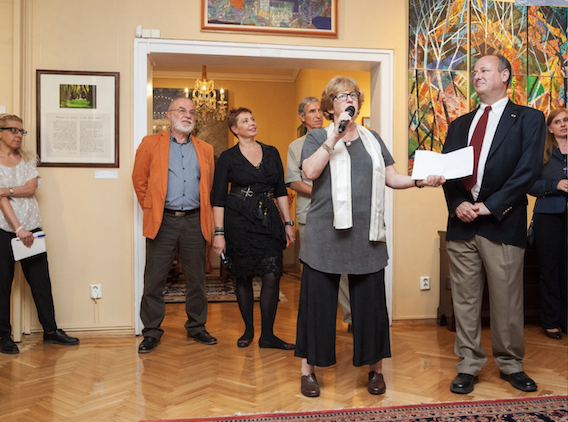 On Nicole’s watch, the US ambassador’s residence became a cultural space in its own right. Exhibition guest lists expanded to give the artworks greater exposure. In addition to serving as the main exhibition space for the Art in Embassies program, the residence also hosted a singing group, dance lessons, a Bulgarian conversation group, a panel discussion, and the team organizing the 2018 charity bazaar. “[Opening the residence to the public] serves two goals: it is of use getting people to have this relationship with America, but also [I wanted] to support the groups,” Nicole says.
On Nicole’s watch, the US ambassador’s residence became a cultural space in its own right. Exhibition guest lists expanded to give the artworks greater exposure. In addition to serving as the main exhibition space for the Art in Embassies program, the residence also hosted a singing group, dance lessons, a Bulgarian conversation group, a panel discussion, and the team organizing the 2018 charity bazaar. “[Opening the residence to the public] serves two goals: it is of use getting people to have this relationship with America, but also [I wanted] to support the groups,” Nicole says.
Nicole is also a collector of traditional Bulgarian art and handicrafts and is the proud owner of no fewer than five Kukeri masks. She is fluent in Russian and Thai and has a working knowledge of French and Bulgarian.
In the following interview for the ABF newsletter, she talks about her three and a half years in Bulgaria and about the country’s potential and gives travel tips to future visitors.
You and your husband are going back to the United States in July. How will you remember Bulgaria?
This is a wonderful, wonderful place. [When] people would ask us, “What do you like best about Bulgaria?” none of us could come up with one thing. We just like Bulgaria, as a whole entity, as something that fits together. As my daughter says, “Bulgaria’s chill.” And that’s what it is. The people are friendly and open, and you can talk to them, and you can make friends, and your children can make friends very easily. And they have a strong work ethic, but they also have a strong play ethic, and they won’t work till midnight. They want to go home, they want to go to their villas, they want to go hiking, they want to go skiing. It’s a great balancing culture.
This country is just packed with interesting things to do, with history, with archeology, which I am very interested in, with cultures that have been maintained and also are now undergoing revival like the culture of the Kukeri, the music. Dance is really undergoing a revival. At the embassy, we have horo classes every Friday. It’s great exercise… Living here’s just fun, and the American families that live here really, really enjoy it. And, of course, the fact that we can afford it here makes a huge difference. It’s comparatively inexpensive for us to go out and do things… But the primary thing is that it is just an enjoyable place to be.
We had many, many friends come and visit. To see them in the States, it takes years… but they all come to visit us here. We’ve had more than 30 friends or groups of friends come to visit us.
What do you like about Bulgarians best?
You can sit down with somebody you haven’t met before and have a real, honest, full-out conversation with them, without worrying about it. And they’ll talk to you and they’ll laugh. The only real problem is that they won’t do that in Bulgarian with you.
How’s your Bulgarian?
My Bulgarian… when I speak with my Bulgarian teacher, is great. But people really won’t let me use it with them. So, you can speak to them for five minutes in Bulgarian and they’ll say, “I’m sorry, I don’t speak English very well.” “Аз сега говоря на български.” [“I am speaking in Bulgarian right now.”] They are not used to hearing a foreigner speak Bulgarian and all they hear is “accent, accent, accent.” “I don’t know what you are saying.” And then once they speak English, they speak it really well. They speak it much better than I speak Bulgarian, and they are very impatient.
People don’t think well of their language; people think their language is less important than English. People think that it is their job to speak world languages. That’s what they’ve been taught at school. I would have liked to become not just technically proficient but actually proficient in Bulgarian, where I could just go out for a drink and just have the whole evening be in Bulgarian.
Favorite word in Bulgarian?
I like “Няма драма” (lit. “There’s no drama”—“It’s cool”) because to me it captures Bulgaria. Plus, it’s just a great sound.
Favorite Bulgarian custom?
I love the mountains, and I love the culture and the festivals. And my least favorite custom is that I still cannot master saying no and yes. [Nicole refers to Bulgarians’ nodding gesture for “yes” and the back-and-forth turning of the head to mean “no.”]
Favorite Bulgarian dish?
Baked cheese, walnuts, and honey. I like that served as a salad or for dessert. And I also like sach.
What places in Bulgaria did you enjoy visiting the most?
I love Belogradchik; it’s one of my favorite places in the world. But to see the opera and watercolor festival there and the ancient fortress and the rock formations used as a backdrop for the opera stayed with me. Listening to Wagner amid the Neolithic cave paintings in Magura Cave was another highlight.
I do like swimming in the Black Sea. I like the water: it’s a little salty, it’s the right temperature, it’s great. We went to Sozopol once and stayed at the Santa Marina village, and then we went to Kaliakra. Also, the different archeology sites. Kabile we went to recently; I’ve been there twice. I’ve been to all the different archeological museums. I’ve been to Veliko Tarnovo several times.
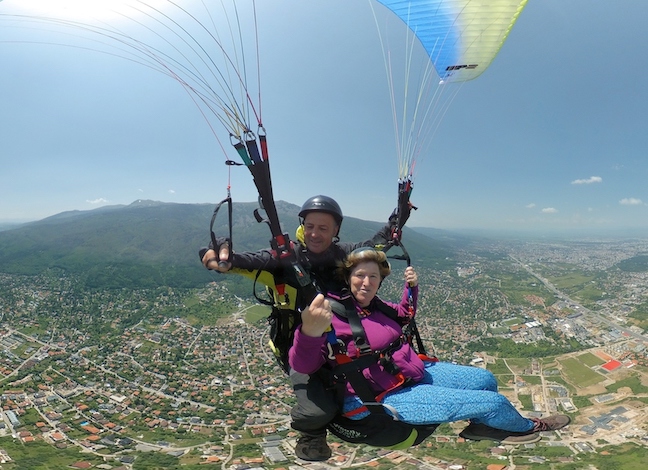 You are passionate about ethnography and culture. What is your favorite Bulgarian cultural tradition?
You are passionate about ethnography and culture. What is your favorite Bulgarian cultural tradition?
The Kukeri tradition is a wonderful, fascinating thing. Carnival… is clearly a very deep characteristic of humanity but is expressed so differently in so many places. My peak experiences here have definitely been the festivals in Pernik and in Yambol, where you could see the different Kukeri groups. Also, I did spend one January 13 going around in Pernik, and we went to the different villages and we saw the celebrations there. We saw a doctor with an interesting appendage for his nose. [Laughs.] And I did see these feather masks mounted on the ground around the campfire that had been had the night before and wanted one, and eventually got one.
Do you have a favorite Bulgarian artist or artists?
I like the ones that we have exhibited, obviously. I really enjoy the photography of Alexander Ivanov, who we were lucky to exhibit, and the fact that he takes his pictures from a paraglider is really something. He does the Bulgaria Bird’s Eye View. Alexander Ivanov and [Bulgarian painter] Nadezhda Kuteva both capture all of my different interests because Nadezhda has the folklore and the ethnography, and that’s what she does with her work. There’s this really expressive quality to her paintings. And Alexander Ivanov captures the Bulgarian landscape, and I love the fact that he does it from a paraglider.
Nicole followed Alexander Ivanov’s example and bid farewell to the place she called home for the past three and a half years from the air—by taking a paragliding trip.
Paragliding selfie by Milen Donchev
